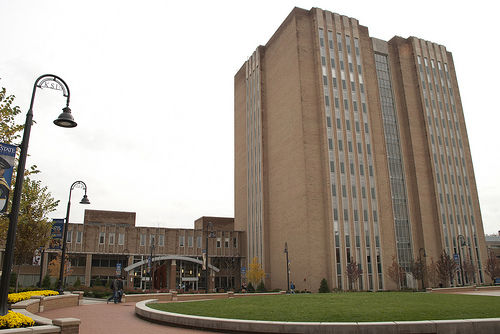Editor’s note: Information in the first four paragraphs of this article was edited due to factual errors.
The university is saving $12 million annually after 80 faculty members took part in a recent voluntary early separation plan.
The university said it spent $7.5 million on the early separation plan, which was available for tenured and non-tenured faculty across the eight-campus system. Tenured faculty members are full-time employees with a high degree of job security.
Each employee receives a one-year contract that is renewed every year. Faculty were not obligated to accept the separation deal.
Senior Vice President of Finance and Administration Mark Polatajko said the estimated cost savings is based on “the most recent faculty separation plan that was approved by our board of trustees in September of 2022.”
“That was placed in effect in the Fall of 2022 and was finalized by the end of this past fiscal year in June of 2023,” he said.
The university hires an external advisor firm to run data analysis and modeling based on the most recent census of faculty and employees, according to Polatajko. This division then calculates the number of separations needed for the program and how much is needed in incentives to reach their desired number of separations.
“What this allows us to do is to reduce instructional expenses, allows us to realign based [on] budget resources among the various colleges and programs, and allows us to invest in strategic enrollment management growth priorities as it relates to new and developing programs,” he said.
Polatajko says the university engaged in two similar programs in 2020 and 2021.
Philosophy professor Deborah Smith, also the president of the Kent Chapter of the American Association of University Professors, says that the early separation plan incentivizes faculty considering retirement to do so immediately rather than wait several more years.
She added that it is common for faculty to return to teaching after retiring, with or without early separation.
“It’s certainly much better that they offer a voluntary separation plan rather than do what some universities do in this context, which is they just invoke what we call ‘retrenchment’ and start laying faculty off,” she said.
She added that Kent State has not had mass layoffs since the first faculty contracts in 1978.
Provost Melody Tankersley said the university has not had issues replacing faculty who participated in the buyouts.
“Faculty would have been able to give their notice in enough time for deans and department chairs and school directors to find appropriate accommodations for instruction,” she said.
To fill temporary vacancies, Tankersley said the university hires part-time instructors or use full-time faculty to fill the role if need be.
“We’re constantly evaluating the needs of a program in terms of instruction, and so we’re able to make decisions in advance so that courses are appropriately covered by faculty,” she said. “We haven’t had long-term issues that have been unaddressed.”
The AAUP will begin negotiating new contracts with the university this summer.
Michael Neenan is a reporter. Contact him at [email protected].





